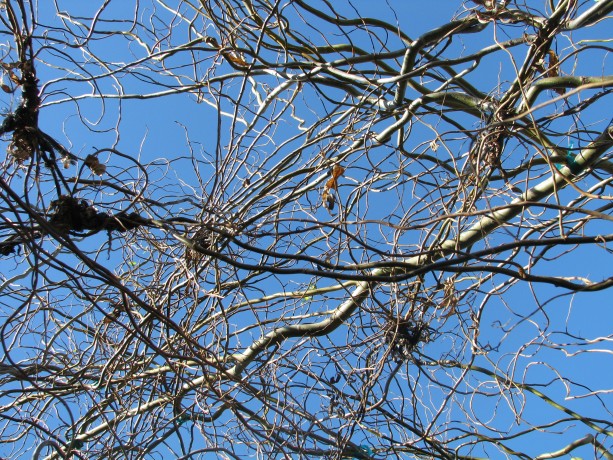The Fine Art of Pleaching or Plashing
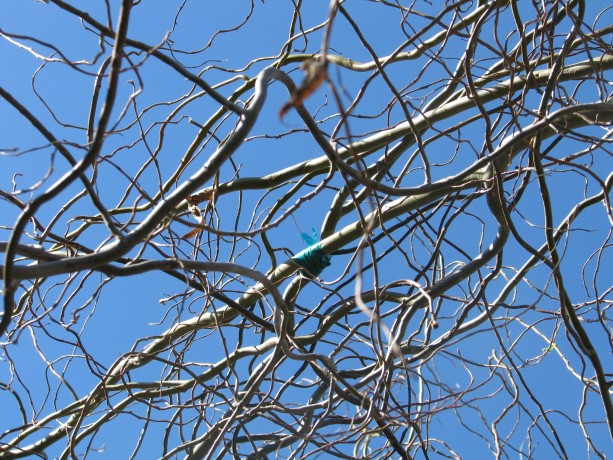
My daughter and I pleached today, although I’ve had the pleasure of pleaching before this , and even later. Pleaching, or its synonym plashing, refers to the interweaving of branches, both live or dead. Basketry is one form, but more notably is the pleaching of living branches to form secure living fences, buildings or artwork. The withy (willow) bird hide (a covered place from which to watch birds) is a living building I planted two years ago. We pleached our withy hide today. Not many people can say that! (or admit to it).
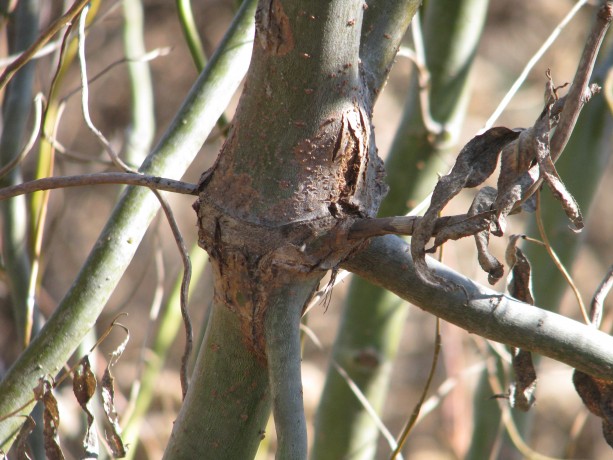
Pleaching can be done on many vigorous trees such as willow, or even fruit trees such as plum. The branches grow together making separate plants become part of a whole. The trees then share nutrients and water and can pull what it needs from roots a long distance away.
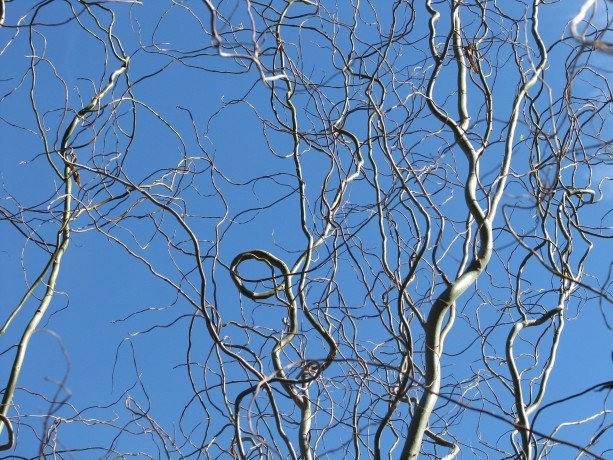
Pleaching essentially makes many plants into one living organism. Pleached hedgerows make a living barrier to keep in livestock; pleached trees can be woven into furniture, living artwork, decorative fences, and living trellises. Pleaching livestock fences was practiced a lot in Europe prior to the invention of barbed wire, and then was forgotten for awhile only to be revived as a form of artistic gardening.
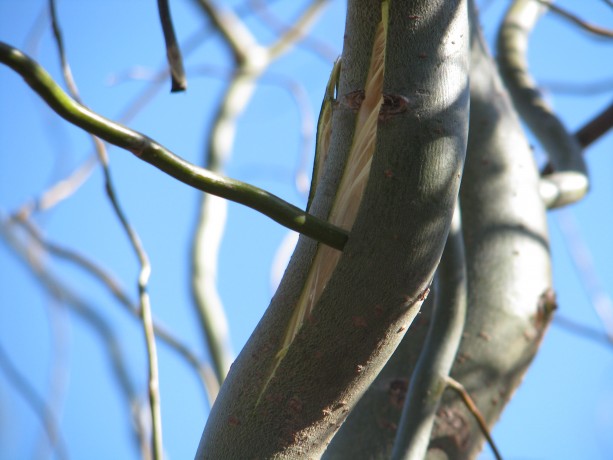
Today I of course, as is my habit, waited until the sun was directly above the area where I was working so that I had to look into it as I worked. I don’t recommend this, however. My daughter used a fruit-picking pole to snag some of the taller, whippier branches of the curly willow that make up the withy hide. I stood on a ladder, squinting, and pulled two branches together.
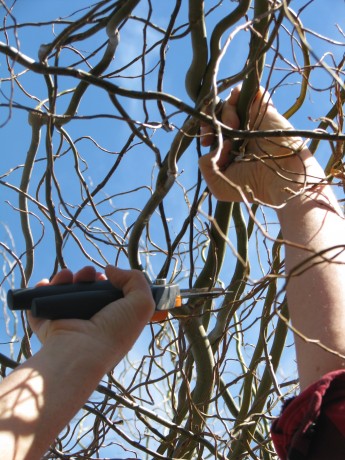
To insure that you have a good pleach going, it is best to lightly scrape the bark from both pieces just where they are going to meet; something like you see blood brothers do with their hands in the movies, but with no blood involved.

Then you make sure the pieces fit snugly, then tie them on. I’ve use various materials to do this. Twist-ties hold securely but the wire can eventually girdle the growing branches. Twine is more difficult to use in that it doesn’t grip the branches well enough for a firm hold, but it will eventually break down, hopefully after the pleach is successful. This time I used green tree tape. It grips well, is easy to tie, and will stretch with the growing branches and eventually break. The green color won’t be noticeable when the willow leafs out, either.
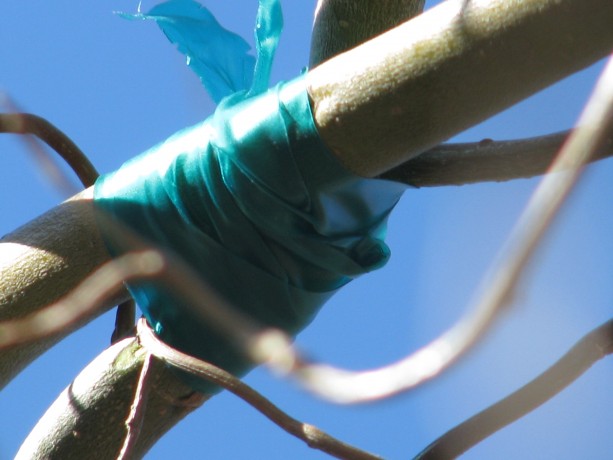
As I pleached from the top of the ladder, working overhead while the sun and curly twigs attacked my eyes, my daughter pleached pleasing arches over the ‘windows’ of the hide.
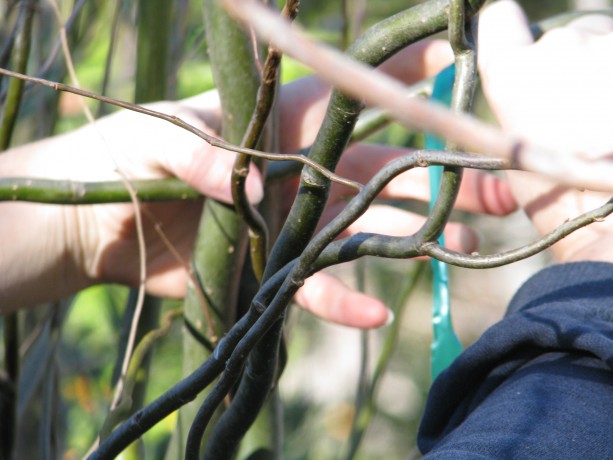
The hide looks lopsided because the willows on one side have found sent out roots to drink from the small pond. With more pleaching, the thirsty trees on the other side will probably take advantage of that water source, too, and have a drink via their overhead connection. I think it is part of its charm. A half-wild building.
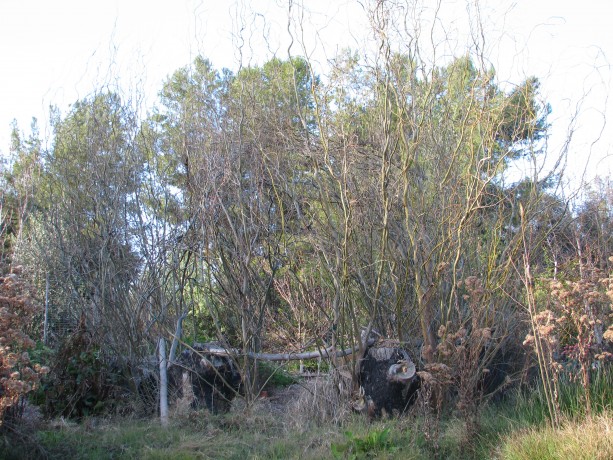
Try pleaching a small fence or a living bench or chair. It is tremendous fun and if you don’t like it, you can always cut it down. Oh, and work on a cloudy day.
